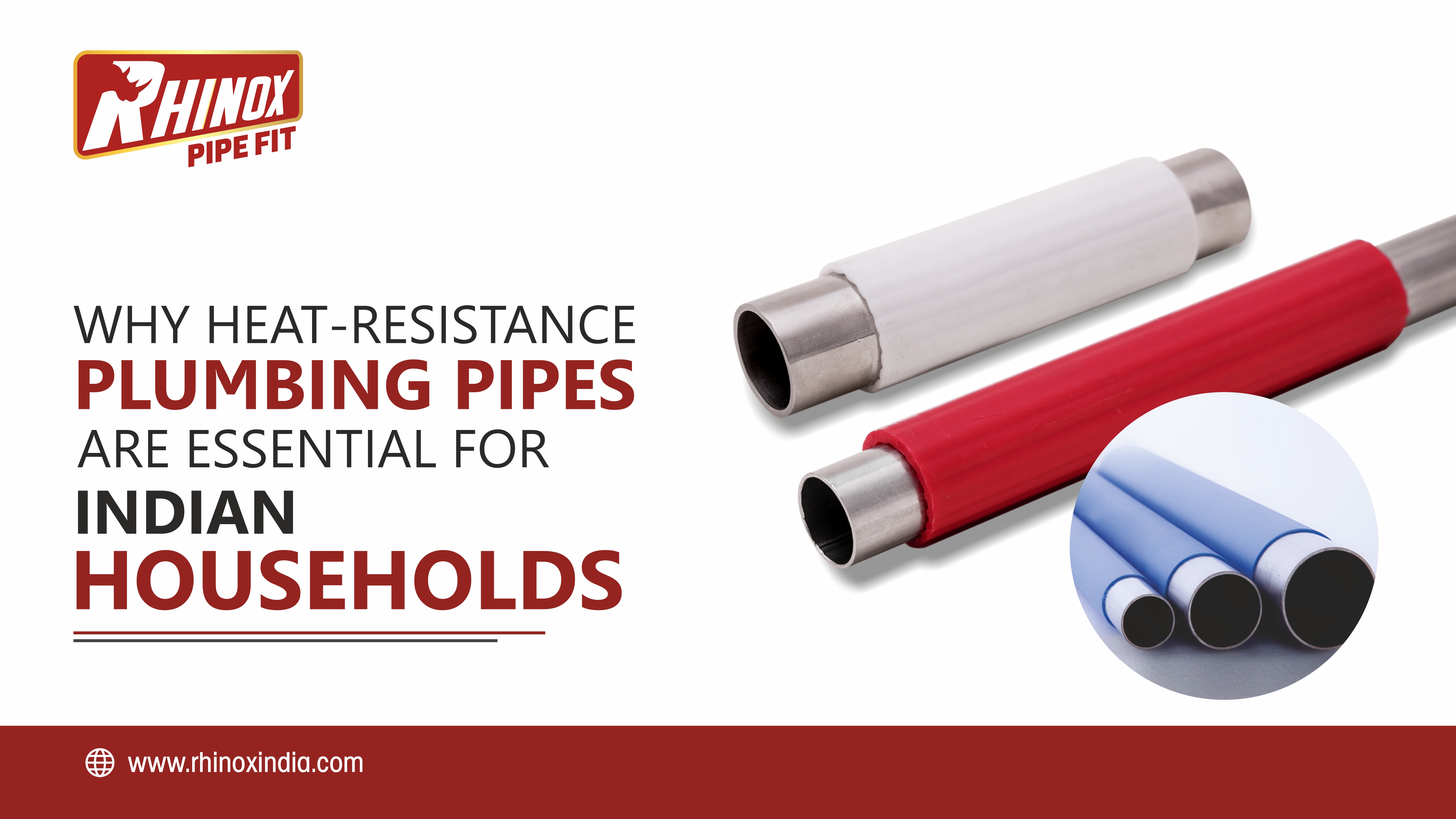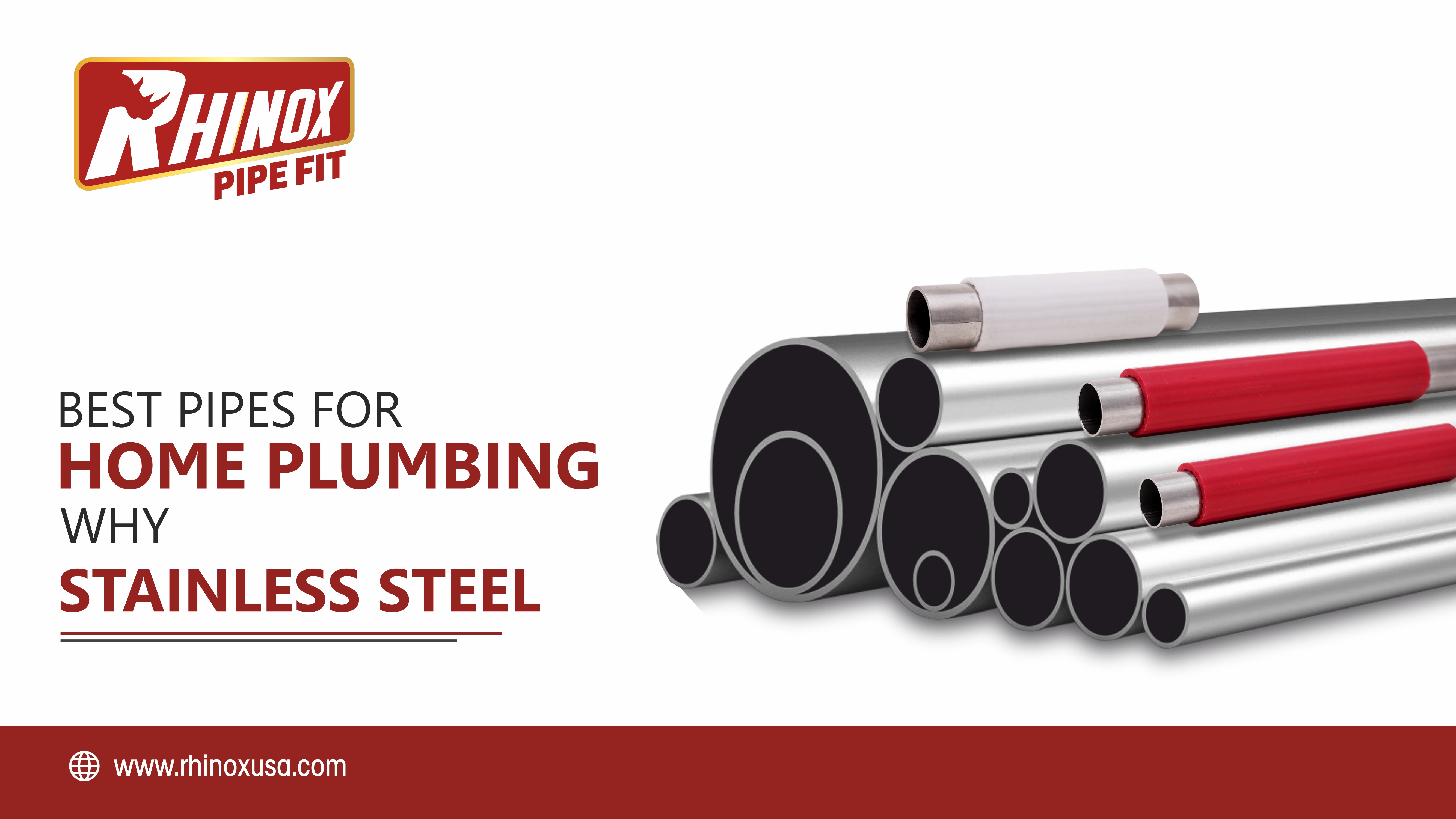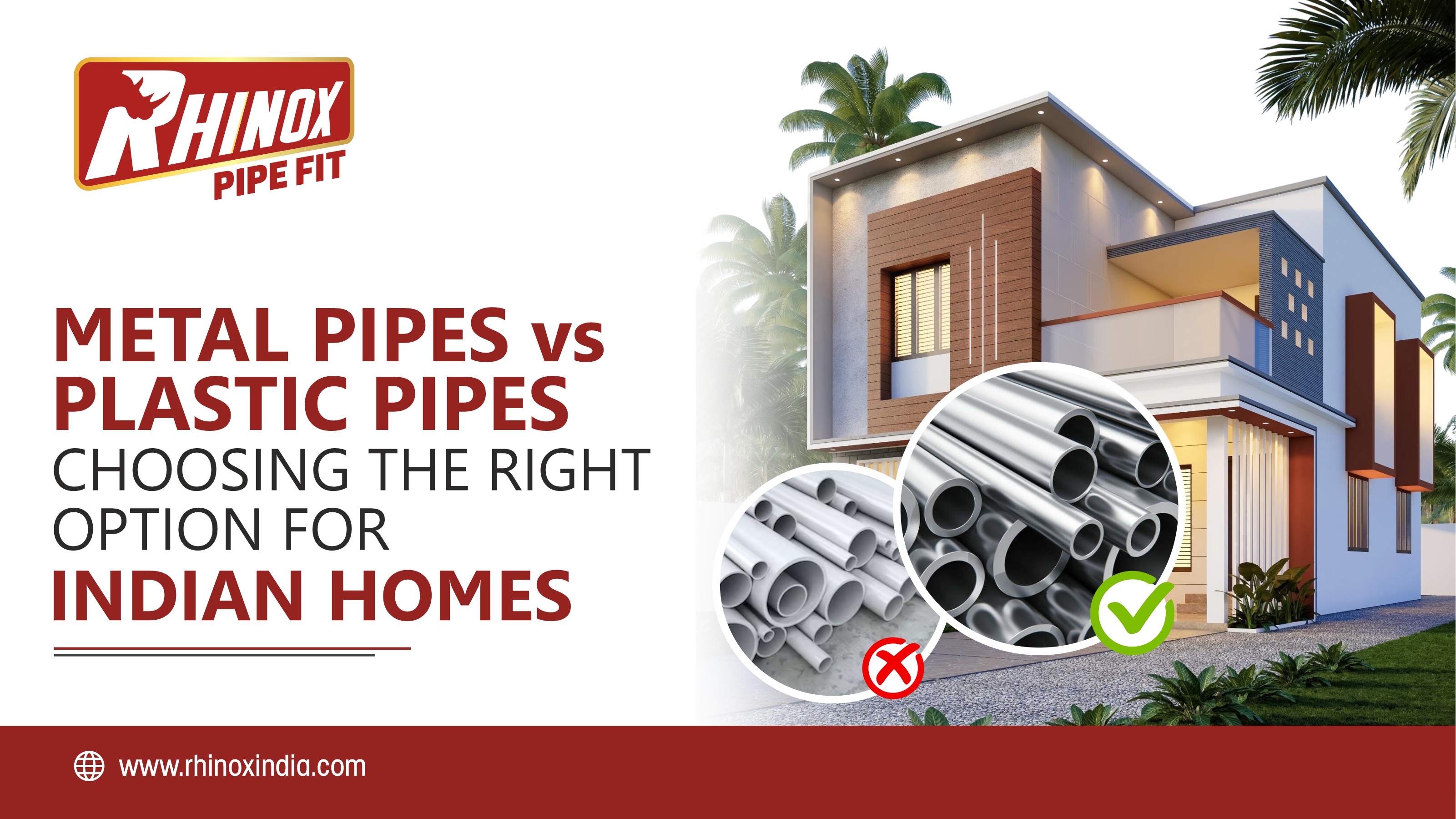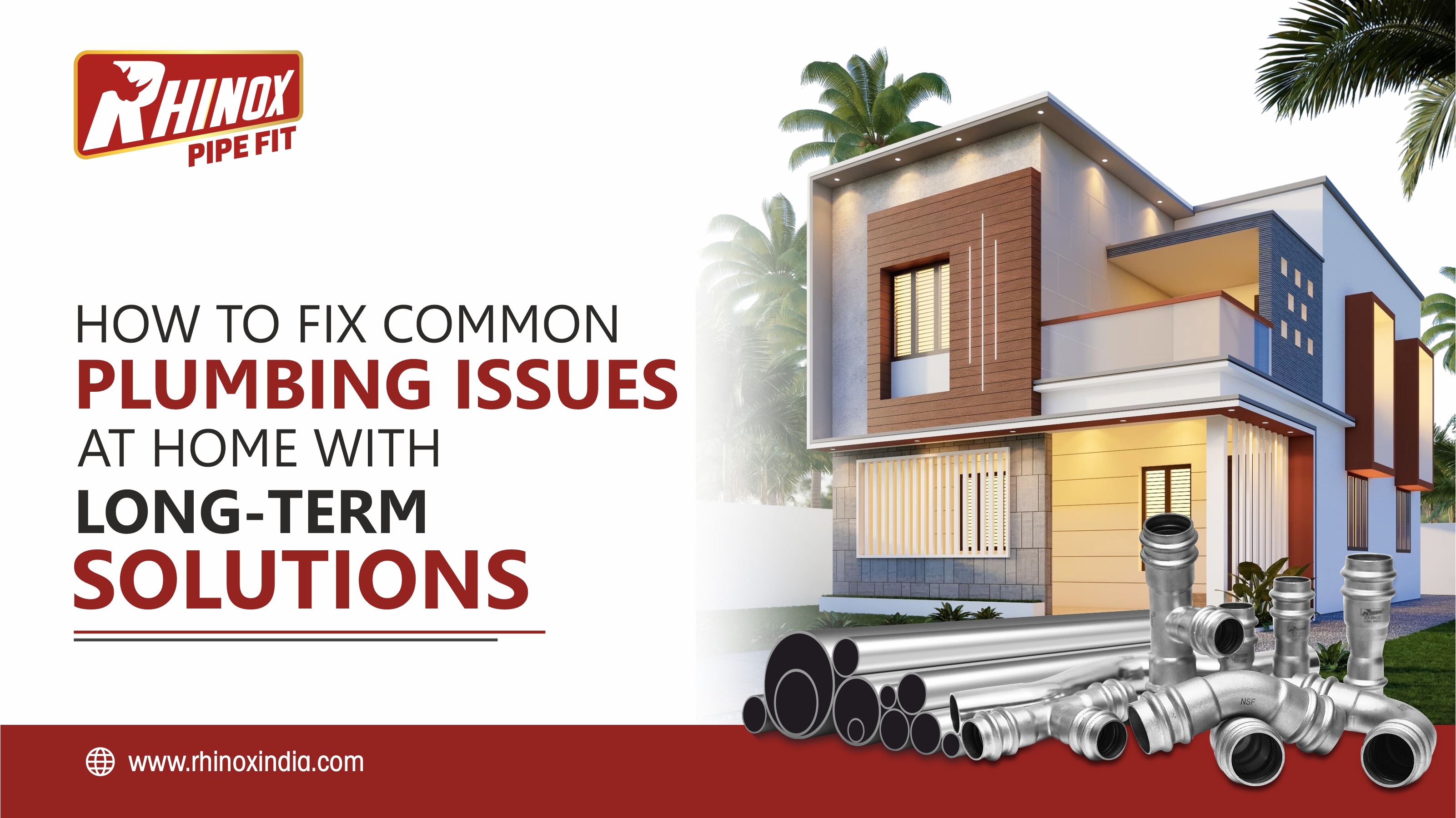
In most homes, plumbing isn’t something people think about until something goes wrong. But anyone who’s ever had a burst pipe in the middle of summer or a leaky hot water line behind freshly tiled walls knows how disruptive and expensive it can be. The truth is, our homes today use more hot water than ever - instant geysers, dishwashers, solar heaters - and this is where heat-resistant plumbing pipes make all the difference.
I’ve seen plenty of homeowners invest in designer fixtures and high-end appliances, only to have the hidden network carrying water fail far sooner than expected. It’s not always the plumber’s fault or the appliance’s fault - often, the wrong choice of pipe is to blame.
The Challenge of Heat in Indian Plumbing
India isn’t gentle on plumbing. Summers are brutal in many parts of the country; rooftops and terraces can bake at 50°C or more. Add to that geysers pumping water at 60–70°C or solar water heaters running almost all day, and the pipes are constantly under thermal stress.
Non-heat-resistant pipes often can’t keep up. Over time, they expand, contract, and weaken. Sometimes the damage is gradual—tiny hairline cracks that eventually leak. Other times, it’s catastrophic, like a burst concealed line that forces you to rip open walls or ceilings.
Think about kitchens, too. Under-sink hot water lines take a beating from constant temperature fluctuations, while exposed lines on terraces bear the brunt of direct sunlight and sudden cooling during rains. For these reasons, long-lasting plumbing today needs to be designed with heat in mind.
What Sets Heat-Resistant Pipes Apart?
A pipe designed to withstand heat isn’t just a thicker or more expensive version of a regular pipe. It’s engineered to handle higher temperatures and the increased internal pressures that come with them.
Most heat-resistant plumbing pipes are made from advanced polymers or multilayer composites. These materials don’t lose shape, strength, or pressure integrity even when subjected to prolonged high temperatures. They offer:
- Thermal stability – no sagging or warping under constant heat
- Pressure resistance – handling both hot water and elevated pressure
- Longer service life – fewer leaks, fewer replacements
- Compatibility with modern systems – perfect for high-output geysers, booster pumps, and solar setups
It’s not about over-engineering; it’s about ensuring that what’s behind your walls can quietly keep up with how you live.
Stainless Steel: Still the Gold Standard
For the main supply lines, stainless steel pipes India continue to hold their ground as the most reliable option. They’re practically immune to temperature fluctuations, don’t corrode, and have unmatched longevity. Many homeowners prefer them for exposed pipelines too—apart from strength, they offer a clean, modern look.
That said, stainless steel isn’t always practical for every application, especially when you need flexibility for concealed hot water lines or tight bends. This is where composite pipes come into play, giving you a balance of performance, ease of installation, and cost-effectiveness.
Fittings Matter Just as Much
Even the best pipe can fail if paired with subpar fittings. With heat and pressure at play, you need fittings that won’t loosen, leak, or degrade. Rhinox press fittings are a popular choice for exactly this reason. They create secure, leak-proof joints without the hassle of welding or threading, making installations faster and more reliable. Steel pipes & welded pipes are used for different purpose and they have their own pros and cons.
I’ve walked into sites where pipes were high-quality, but cheap connectors were the weak link. In most cases, the cost difference between good fittings and bad ones is negligible compared to the headache of repairing a leak later.
A Real-World Example
A homeowner I know in Panipat had just built a new house with a solar water heater system. Eighteen months in, one of the concealed hot water lines started leaking. To fix it, they had to break through expensive bathroom tiles. The issue wasn’t installation—it was that the piping used wasn’t rated for sustained heat.
The lesson? Skimping on the “invisible” parts of a plumbing system often costs more in repairs, water damage, and frustration than doing it right the first time.
Why It’s Worth the Investment
Yes, heat-resistant plumbing pipes can cost more upfront. But factor in the price of ripping open a wall or floor for a repair, replacing tiles, and dealing with water damage, and the math quickly tilts in their favor.
Energy efficiency is another bonus. Properly insulated hot water pipes reduce heat loss, so your geyser or solar system doesn’t have to work as hard. Over time, that means lower energy bills and a smaller environmental footprint.
Common Myths Homeowners Believe
- “We don’t use hot water that much.” Even limited hot water use stresses pipes over time, especially in kitchens and outdoor runs.
- “Any high-pressure pipe can handle heat.” Not necessarily. Materials that perform well with cold water can deform under sustained heat.
- “We’ll upgrade later if needed.” Retrofitting usually means tearing out walls or floors. It’s almost always costlier and messier than planning ahead.
Where Should You Prioritize Heat-Resistant Lines?
Bathrooms and kitchens are obvious, but there are a few other areas worth thinking about:
- Terrace and outdoor runs – exposed to extreme thermal swings
- Solar water heating systems – constant high-temperature water
- High-rise apartments – higher pressure amplifies heat stress
- Under-sink lines – frequent exposure to hot and cold cycles
Addressing these points with long-lasting plumbing solutions up front means fewer headaches down the line.
Final Thoughts
Plumbing should be something you don’t have to think about—reliable, efficient, and built to last. In India’s climate, that means choosing materials designed to handle both the heat and the pressure of modern living.
Heat-resistant plumbing pipes, paired with dependable components like Rhinox press fittings and trusted systems such as stainless steel pipes India, aren’t just about durability—they’re about peace of mind. Invest wisely now, and you’ll avoid the all-too-common story of costly, disruptive repairs later.
At Rhinox India, we’ve seen what happens when systems fail—and when they last. If you’re building or upgrading, take the time to choose the right piping. Your future self will thank you.



